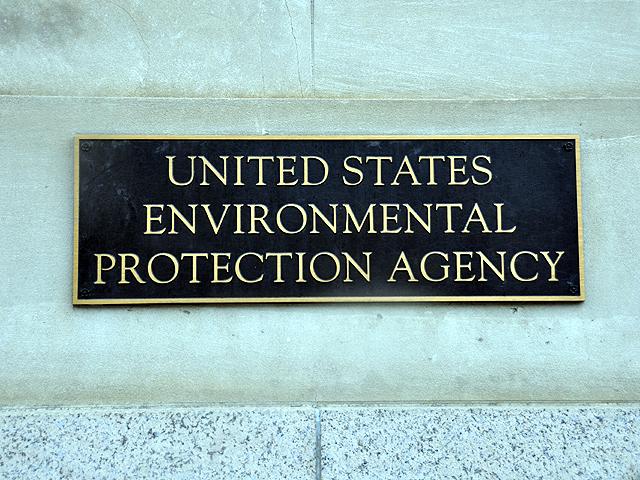EPA Rescinds CWA Groundwater Guidance
EPA Action on Groundwater Guidance Could Expose Farmers, Ranchers to Clean Water Act
LINCOLN, Neb. (DTN) -- Even if agricultural facilities are designed to avoid wastewater discharges, a recent EPA action to rescind Trump-era groundwater guidance could expose farmers and ranchers to Clean Water Act liability.
On Sept. 16, EPA announced it was rescinding a guidance document issued by the Trump administration on Jan. 14, 2021, following a Supreme Court ruling in the case County of Maui v. Hawaii Wildlife Fund.
The U.S. Court of Appeals for the Ninth Circuit previously ruled pollution discharges traveling through groundwater and to a navigable water require Clean Water Act (CWA) permits. The Trump administration guidance was to help regulators to apply the court's decision in the field.
Glenn E. Roper, a Pacific Legal Foundation attorney who argued the Maui case, said EPA's recent action could reduce a landowner's ability to defend against CWA violation allegations. The Trump guidance, he said, provided more protection to landowners.
"As a practical matter, that reduces a landowner's ability to defend against allegations of CWA violation by relying on the way that his facilities or system is designed," Roper told DTN.
"Under the guidance, if a system was designed to avoid discharges, and generally did so, that would weigh against a CWA violation even if there were some leaks into groundwater that eventually connected with a jurisdictional water. By eliminating the design-and-performance factor, the EPA's rescission takes away that argument or at least reduces its strength."
Roper said the EPA action may raise some concerns for farmers and ranchers because, even if they design facilities or wastewater systems to avoid discharges, "they still could face CWA liability for even small leaks of pollutants into groundwater that eventually connects to a navigable water."
FUNCTIONAL EQUIVALENT
Roper said the EPA action doesn't necessarily mean the agency will be regulating groundwater.
P[L1] D[0x0] M[300x250] OOP[F] ADUNIT[] T[]
"Even the Obama-era WOTUS rule expressly excluded groundwater," he said. "That would be a truly extraordinary change. But I think it does indicate that the new administration will likely take a broader view than the prior administration as to when discharges into groundwater are the 'functional equivalent' of a discharge directly into a navigable water, which is the test established in the Maui County decision."
That Trump guidance stated that as part of the "functional equivalent" analysis, "the design and performance of the system or facility from which the pollutant is released" should be considered.
Roper said that means a release is less likely to be the "functional equivalent" of a discharge if it came from a facility or system that was designed not to release pollutants, but to store, contain, or treat them.
So, under the previous guidance, he said, systems that are designed to transfer, store, treat or discharge wastewater and perform that function were less likely to meet the functional-equivalent test. That would also include things like septic systems, cesspools, settling ponds, stormwater controls and green infrastructure such as infiltration or evaporation systems.
EPA SAYS GUIDANCE INCONSISTENT WITH CWA
In rescinding the guidance, EPA said in a news release the design-and-performance factor is "inconsistent with the Clean Water Act and the Supreme Court decision" in Maui.
EPA said in a news release the previous administration's guidance "reduced clean water protections by creating a new factor for determining if a discharge of pollution from a point source through groundwater that reaches a water of the United States is the 'functional equivalent' of a direct discharge to such water.
"The addition of that factor skewed the 'functional equivalent' analysis in a way that could reduce the number of discharges requiring a National Pollutant Discharge Elimination System permit."
The EPA went on to say in the news release: "The Clean Water Act and a straightforward application of the U.S. Supreme Court's decision provide important protections for the nation's waters by ensuring that discharges of pollutants to groundwater that reach surface waters are appropriately regulated. This action will help protect water quality in lakes, streams, wetlands, and other waterbodies."
The National Cattlemen's Beef Association and other agriculture groups filed an amicus brief in the Maui case, raising concerns farmers and ranchers could be subject to expanded CWA regulation.
NCBA Chief Environmental Counsel Scott Yager told DTN in 2020 the Supreme Court's opinion "leaves a lot of discretion to lower courts and the federal government" to determine which groundwater discharges fall under the Clean Water Act.
In 2012, several environmental groups sued the County of Maui, arguing the county was discharging a pollutant to navigable waters, the Pacific Ocean, without the permit required by the Clean Water Act.
A district court found effluent from the county's wells ended up in the ocean and should require a Clean Water Act permit. The court found the pollution's "path to the ocean is clearly ascertainable" from Maui's wells into groundwater and to the ocean. The Ninth Circuit affirmed the decision on Feb. 1, 2018.
The Ninth Circuit said the Clean Water Act "does not require that the point source itself convey the pollutants directly into the navigable water" and that pollutants coming from the wells were "fairly traceable."
During oral arguments before the court in November 2019, an attorney with the U.S. Department of Justice argued the EPA excludes from enforcement all pollution discharges into and through groundwater to navigable waters.
Groundwater currently is regulated at the state level and is not considered to be a pollution point source.
Read more on DTN:
"SCOTUS Vacates Maui Groundwater Case," https://www.dtnpf.com/…
Todd Neeley can be reached at todd.neeley@dtn.com
Follow him on Twitter @DTNeeley
(c) Copyright 2021 DTN, LLC. All rights reserved.




